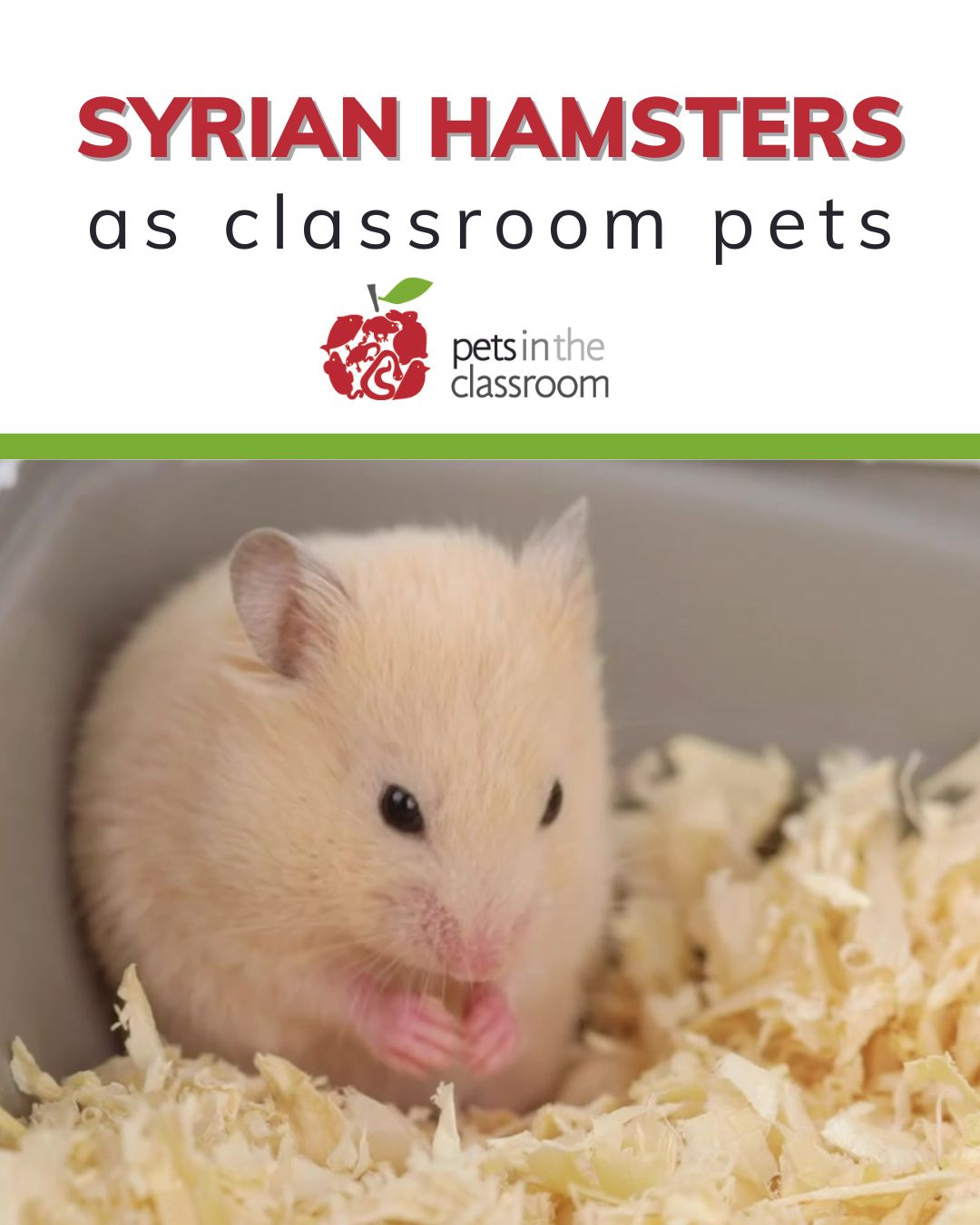Syrian hamsters are native to the arid regions of Syria and Turkey, where they were first discovered in the 1830s. Domesticated since the 1930s, they have become one of the most popular pet hamster species worldwide. With their manageable size (5–7 inches), gentle temperament, and captivating behaviors, Syrian hamsters make excellent classroom pets. They offer opportunities to teach responsibility, empathy, and animal care while providing a unique and engaging way for students to learn about small mammals and ecosystems.
Caring for Your Classroom Syrian Hamster
Syrian hamsters are relatively low-maintenance, but they require proper housing, a balanced diet, and regular interaction to thrive.
- Housing: Provide a spacious cage with bedding and a hideout for your hamster’s comfort. A solid-surface exercise wheel (8–12 inches) is essential for physical activity.
- Diet: Feed a mix of lab blocks, hamster pellets, and occasional fresh vegetables or fruits. Ensure a steady supply of fresh water in a clean water bottle.
- Enrichment: Keep your hamster mentally stimulated with chew toys, tunnels, and safe opportunities to explore outside its cage.
For comprehensive care instructions, including cleaning, nutrition, and handling, refer to our Syrian Hamster Care Sheet.
Syrian Hamsters in the Classroom: Engaging Teaching Ideas
Syrian hamsters are more than just pets—they’re interactive teaching tools that can enhance your curriculum in creative ways. Here are some ideas:
- Behavior Observation: Assign students to observe the hamster’s habits, such as burrowing, eating, and using its exercise wheel. Encourage them to hypothesize why hamsters exhibit these behaviors.
- Reading Buddy: Boost literacy skills by allowing students to read aloud to the hamster in a quiet setting. This calming activity builds confidence and fluency.
- STEM Projects: Use our Free STEM Lesson Plans for hands-on activities, like designing a hamster maze or calculating distances it runs on its wheel.
- Art and Writing: Inspire creativity with hamster-themed art or writing prompts. Students can draw their hamster’s habitat or imagine its adventures in the wild.
A Classroom Pet That Inspires
Syrian hamsters can teach students about biology, responsibility, and empathy. Through their care, students gain a deeper appreciation for the complexities of animal behavior and the importance of conservation and ethical pet ownership.
Conclusion
Adding a Syrian hamster to your classroom enriches your teaching environment in ways that go beyond traditional lessons. With proper care and integration into your curriculum, this fascinating pet can inspire curiosity, creativity, and a love for learning.
For detailed care tips, refer to our Syrian Hamster Care Sheets, and explore our Free STEM Lesson Plan Database for engaging and educational activities. The Pets in the Classroom grant program is here to support you in making this rewarding experience possible. Learn more about how we can help bring the joy of a classroom hamster to your students.




